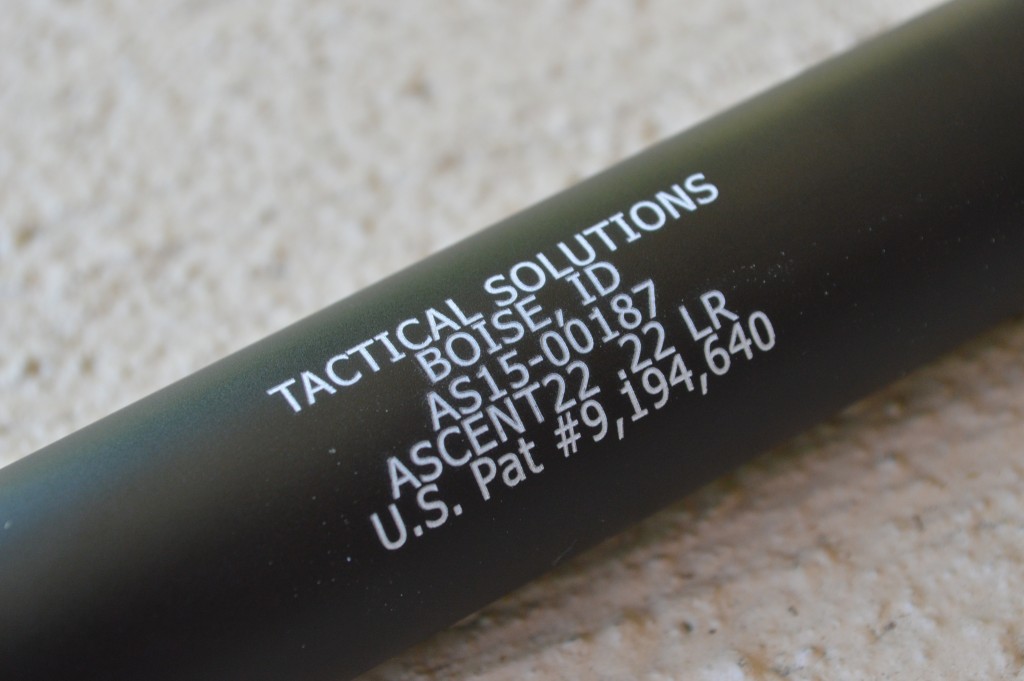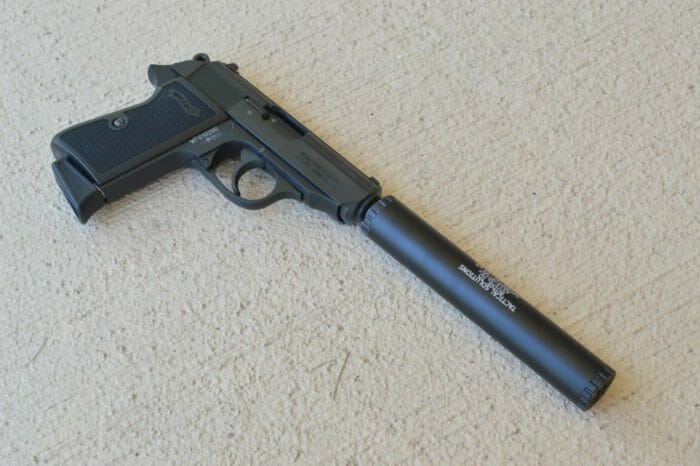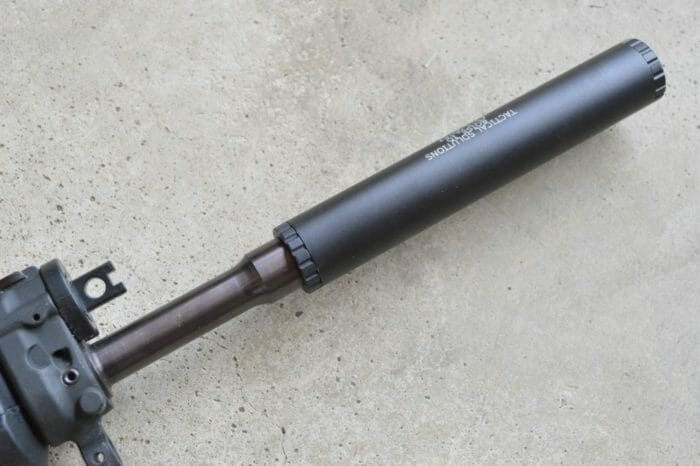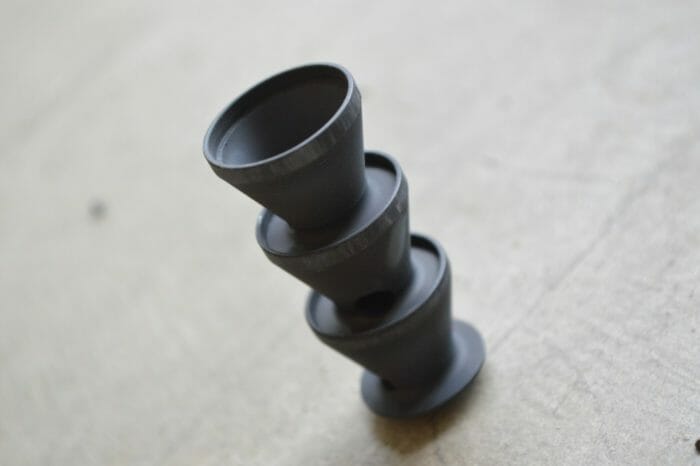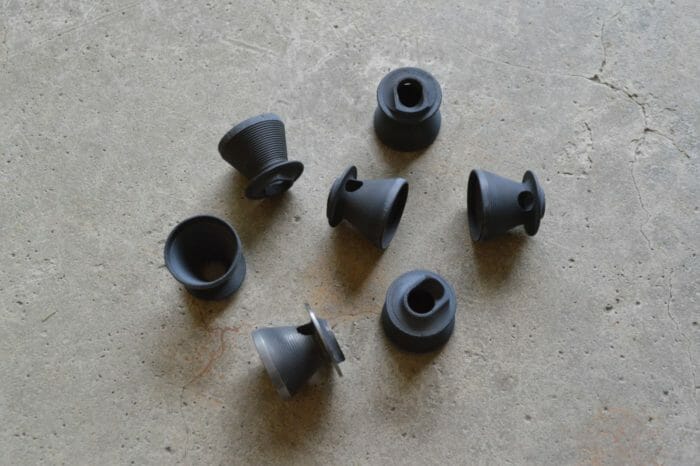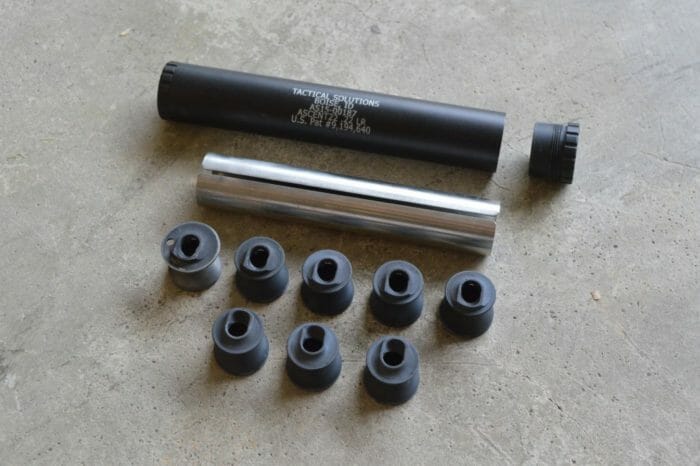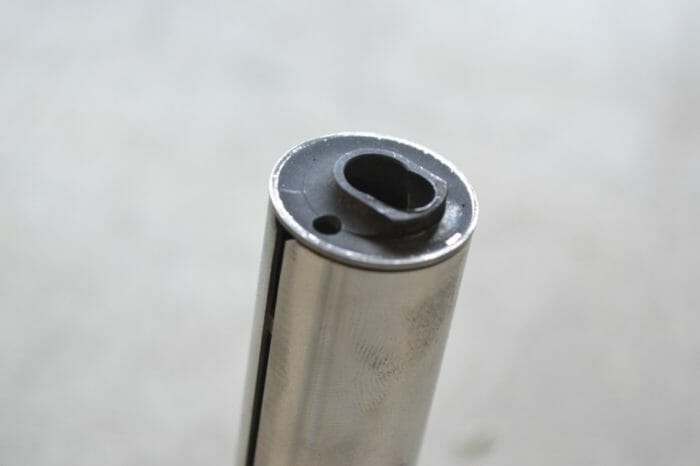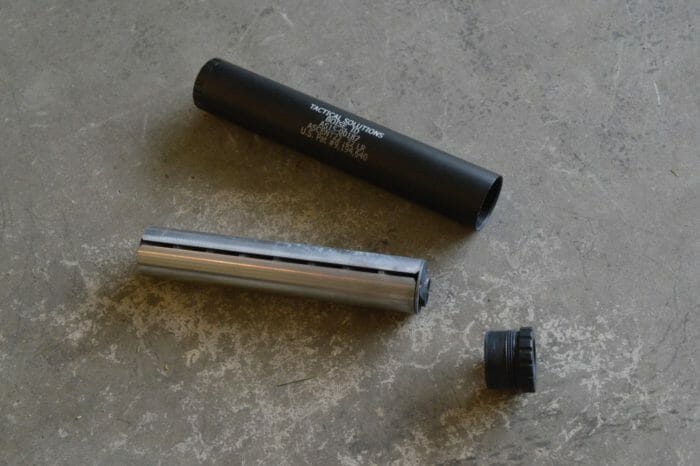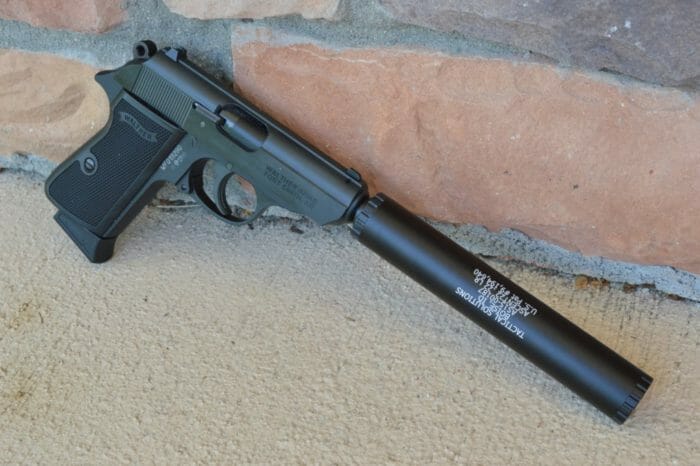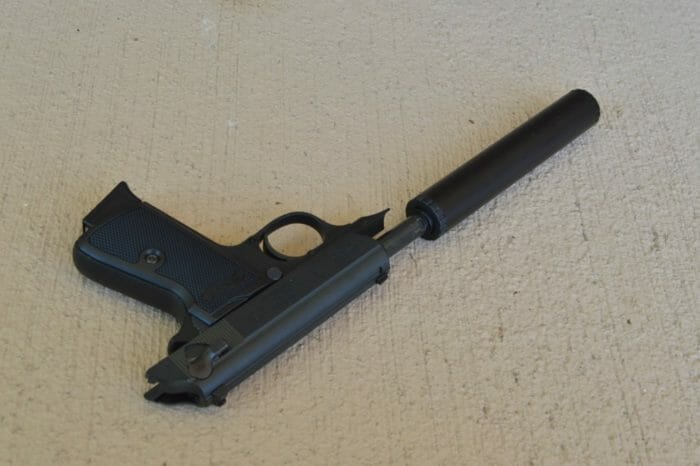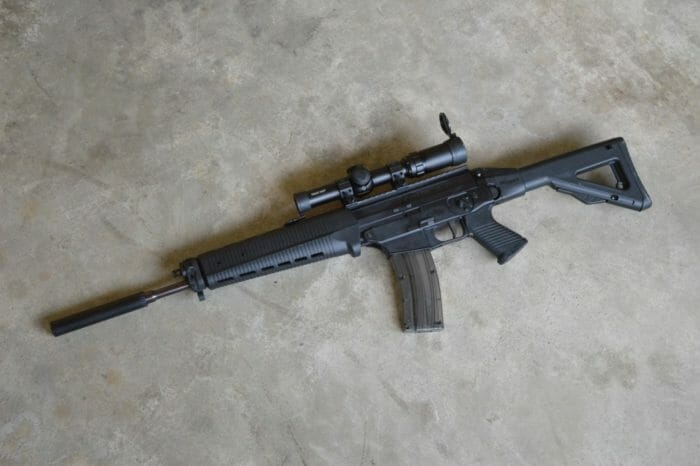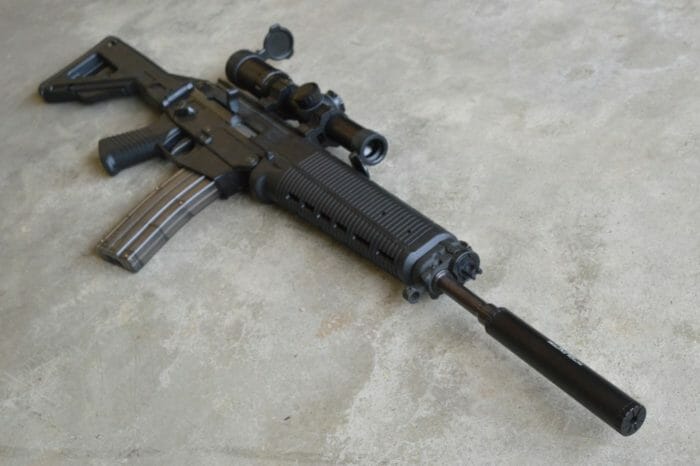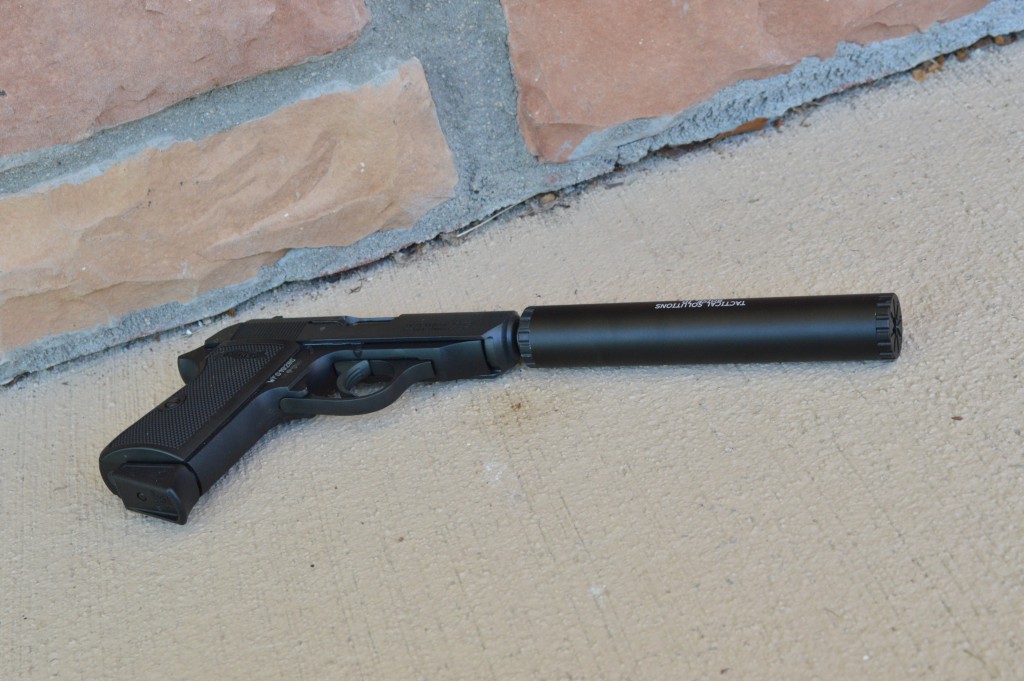Silencer Shop Authority: Tactical Solutions Ascent 22 Review
While discussing Tactical Solutions’ new Ascent in my 2016 suppressor preview, I noted that the company’s Axiom and Ascent lines of .22 silencers were theoretically some of my favorite rimfire cans on the market. Designed with shielded cores, efficient K-baffles, and quality materials, I really could not find any serious faults with the suppressors. While TacSol has been in the business of rimfire suppression for quite a long time, the proof is, as they say, in the pudding. Working with Silencer Shop, I was able to bring the Ascent in for closer examination.
Size & Weight
Virtually every .22 caliber suppressor is 1″ in diameter or close to it. The Ascent is not unique in this regard, nor does it need to be. 1″ is plenty of girth to allow for sufficient gas expansion and capture. Silencers of this size also tend to sit low enough to allow full use of factory sights. Even with my compact PPK/S .22, the pistol’s low profile sights cleared the Ascent with ease.
Meanwhile, the Ascent’s overall length is also par for the course. At 5.875″ long, it can ride comfortably on both handguns and rifles.
Where the Ascent holds an advantage over its brother is in terms of weight. The Axiom is a 6-ounce suppressor, so while it isn’t heavy, it also isn’t all that light. The Ascent weighs in at a nominal 4.1 ounces, though the lightly used example I tested tipped the scales at 4.5 ounces. Either way, it is noticeably lighter than the Axiom and is on the lower end of the rimfire weight spectrum as a whole.
Materials & Design
If you’ve seen TacSol’s almost-entirely-titanium Axiom, the Ascent should look very familiar. In fact, the Ascent is really just a more affordable version of TacSol’s flagship .22 suppressor. The key difference between the two offerings is the composition of the baffle stack. Whereas the Axiom features a fully-titanium stack, the only titanium baffle in the Ascent is its blast baffle. The distal ones are aluminum. Like the Axiom, the Ascent’s tube and end caps are titanium.
Taking the Ascent apart for cleaning is simple, thanks to TacSol’s patented split-tube liner. Like some of its rivals, the Ascent features a stainless inner tube that isolates the body of the can from the dirty, fouled baffles. As the name implies though, this inner tube features a longitudinal cut, which allows it to flex somewhat when users attempt to push dirty baffles out for cleaning. Because of this small, but important, feature, the Ascent is remarkably easy to clean.
Inside the Ascent’s tube (and inner split tube) rest eight K-style baffles. As mentioned, the blast baffle is titanium and the seven remaining parts are each made of aluminum. After spending the last year playing with a multitude of different rimfire suppressors, K-baffled silencers have become some of my favorites. Generally speaking, they offer excellent suppression, pleasing tone, and low backpressure. At a very basic level, K-baffles direct gas toward the outer regions of the tube’s interior and away from the bore line. At the same time, the design prevents most of the gas from escaping through the rear of the suppressor. Done correctly, this results in a very quiet suppressor, but K-baffles can sometimes be difficult to remove for cleaning. The Ascent’s split inner tube alleviates these concerns.
Range Report
Based solely on its design, my expectations for the Ascent were pretty high, even before I hit the range. I’ve had excellent luck with K-baffled cans and I figured TacSol’s product would continue that trend. As it turns out, I wasn’t wrong, but the silencer did surprise me in some ways.
Most notably, the Tactical Solutions Ascent featured more first-round pop (FRP) than I expected. Mounted to a Ruger 22/45, Silencer Shop measured the first round through a cold Ascent to be around four or five decibels louder than subsequent shots. My experience with the silencer attached to my Walther PPK/S .22 was consistent with Silencer Shop’s findings. For reference, my current favorite in terms of rimfire performance, the AAC Aviator 2, offers FRP in the +2-3 dB range. I wouldn’t necessarily let the Ascent’s FRP dissuade me from purchasing the can, but TacSol has some room for improvement in this regard.
After the first round, the Ascent performs very well. Its more rugged, heavier brother, the Axiom, is one of the top performers on the rimfire market, and the Ascent isn’t far behind. Averaged over five shots, Silencer Shop has found the Ascent to be roughly a 118.5 dB suppressor on pistols and a 115 dB silencer on rifles. These numbers put the Ascent right in the middle of the highly-competitive rimfire pack.
Speaking more subjectively, I found the Ascent to be absolutely pleasant on my PPK/S .22 and SIG 522. Spread across both hosts, I fired 250 to 300 rounds through the silencer and never felt like I needed additional hearing protection. The Ascent’s tone also falls somewhere in the middle of the .22 caliber field. It doesn’t offer the deepest sound quality I’ve tried, but it isn’t annoying either.
While I had the silencer on my SIG 522, I decided to check point of impact (POI) shift at 25 yards. Compared to a bare muzzle, I found no discernible change in my groupings or where my shots were landing. Such results are fairly typical of lightweight rimfire cans, but it is worth validating that the Ascent likely won’t require a re-zero.
Conclusion
I brought the Ascent in with the expectation that it would be a solid all-around .22 suppressor and it did not let me down. The .22 caliber field is extremely crowded, so it is sometimes difficult for competing suppressors to stand out amongst the litany of quality offerings.
While I found the Ascent’s FRP to be a bit more prominent than I would prefer, overall suppression was certainly good. For a K-baffle silencer, the TacSol’s design is probably the easiest to tear down (even when dirty) that I’ve examined to date. Moreover, the Ascent is impressively light, a feature that allows it to disappear on rifles and sit comfortably on pistols.
Those who are interested in the Tactical Solutions Ascent can find the suppressor at Silencer Shop for a little over $300.
An information security professional by day and gun blogger by night, Nathan started his firearms journey at 16 years old as a collector of C&R rifles. These days, you’re likely to find him shooting something a bit more modern – and usually equipped with a suppressor – but his passion for firearms with military heritage has never waned. Over the last five years, Nathan has written about a variety of firearms topics, including Second Amendment politics and gun and gear reviews. When he isn’t shooting or writing, Nathan nerds out over computers, 3D printing, and Star Wars.

